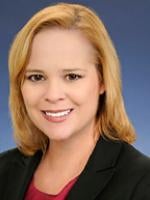Key Points
In the wake of the rapidly escalating coronavirus (COVID-19) pandemic, President Trump signed into law the Families First Coronavirus Response Act (H.R.6201). The wide-ranging legislation enacts a number of emergency measures aimed at addressing the economic, public health and other impacts of the outbreak, including the provision of additional funds to food security programs, the expansion of unemployment insurance, and a temporary increase of the federal match for state Medicaid programs. This advisory summarizes the key employment-related provisions of the Act, including:
- The establishment of emergency paid leave entitlements;
- Tax credits to fund those entitlements; and
- Requirements for health plans to provide free COVID-19 testing.
Emergency leave entitlements
The Act provides for two new types of paid leave for employees unable to work for COVID-19-related reasons, "Emergency Paid Sick Leave" and "Emergency Family and Medical Leave." Both of these provisions will go into effect within fifteen (15) days of enactment, and will sunset on December 31 absent further Congressional action.
Emergency paid sick leave
The Act requires private sector employers with fewer than 500 employees, and all public employers, to provide employees with two (2) weeks of paid sick leave (Emergency Paid Sick Leave) if an employee:
- Is subject to a federal, state, or local quarantine or isolation order related to COVID-19;
- Has been advised by a health care provider to self-quarantine because of COVID-19;
- Is experiencing symptoms of COVID-19 and is seeking a medical diagnosis;
- Is caring for an individual subject or advised to quarantine or isolation;
- Is caring for a son or daughter whose school or place of care is closed, or child care provider is unavailable, due to COVID-19 precautions; or
- Is experiencing substantially similar conditions as specified by the Secretary of Health and Human Services, in consultation with the Secretaries of Labor and Treasury.
Full-time employees are entitled to 80 hours of Emergency Paid Sick Leave. For part-time employees, benefits are based on the number of hours the employee works, on average, over a two-week period. For variable-hour employees, employers should look to the employee's average hours over the prior six months (including hours for which the employee took leave of any type) to determine the two-week average. For new hires, benefits are based on the average hours per day the employee would normally be scheduled to work.
Emergency Paid Sick Leave is fully paid at the employee's "regular rate" of pay – the same rate that is used to calculate overtime under the Fair Labor Standard Act (FLSA) – up to a specified cap, which varies depending on the reason for the leave. When an employee takes leave for his or her own COVID-19 exposure or quarantine (i.e., for reasons 1-3 above), benefits are paid at the employee's regular rate of pay up to a maximum of $511 per day ($5,110 in the aggregate). When an employee takes leave to care for someone else (i.e., for reasons 4-6 above), benefits are capped at $200 per day (or $2,000 in the aggregate). These caps match the amount of the tax credit available to private sector employers to fund the Emergency Paid Sick Leave, as described below. The Department of Labor is expected to issue regulations providing further guidance to employers on how to calculate the rate of pay.
Employers may also comply with this requirement by contributing to a union multiemployer plan that provides such benefits to employees covered by a collective bargaining agreement.
In general, Emergency Paid Sick Leave is available to all employees of covered employers, irrespective of the employee's length of service. Employers may, however, exclude health care providers and/or emergency responders from this coverage. The Secretary of Labor also has the authority to issue regulations to exclude certain health care providers and emergency responders from eligibility, and to exempt businesses with fewer than 50 employees when the imposition of the law's requirements would "jeopardize the viability of the business as a going concern."
Nothing in the Act reduces any rights to paid leave that employees may otherwise have under other federal, state or local law, a collective bargaining agreement or an existing employer policy. Employers may not, however, require employees to use other forms of paid leave before using Emergency Paid Sick Leave, nor may employers discriminate or retaliate against employees who use such leave.
Failure to pay Emergency Paid Sick Leave will be treated as a failure to pay minimum wages in violation of the FLSA. Employers violating the Act would be liable for the amount of unpaid leave, liquidated damages equal to the unpaid amount, and possibly additional penalties and attorneys' fees.
Employers are required to post a notice of the Act's requirements, and a model notice is expected to be available within seven (7) days of enactment. Given the current circumstances, we advise distributing a copy of such notice to workers electronically, particularly if some or all employees are working remotely and thus would be unable to see the notice if posted in the office with other required workplace notices.
Emergency family and medical leave (Emergency FMLA)
The Act also requires covered employers to provide up to twelve (12) weeks of job-protected leave to an employee who is unable to work or telework in order to care for the employee's child under age 18, if the child's school or place of child care has been closed or is unavailable due to a public health emergency related to COVID-19 (Emergency FMLA). Notably, this covers a significantly narrower category of qualifying events than both the Emergency Paid Sick Leave entitlement discussed above, and the FMLA expansion provision in the earlier version H.R.6201, which also would have provided paid FMLA benefits for COVID-19 symptoms and quarantine.
Similar to the Emergency Paid Sick Leave entitlement above, the Act's expansion of these provisions of the Family and Medical Leave Act (FMLA) applies to all private sector employers with fewer than 500 employees and to all public employers covered by the FMLA. The Act modifies the FMLA's usual definition of covered employer for purposes of Emergency FMLA benefits, to both: (1) exempt private sector employers with 500+ employees that are normally covered by the FMLA, and (2) cover small employers with fewer than 50 employees (or fewer than 75 employees within a 50-mile radius) that are normally exempt.
Emergency FMLA is available to any employee who has been employed by the covered employer for at least 30 days, regardless of hours worked. This is significantly different from the FMLA's usual eligibility criteria, which require that employees have been employed for at least 12 months and have worked 1,250 hours in the preceding 12 months.
Under the Act, the first ten (10) days of Emergency FMLA can be unpaid, although an employee may elect to use other accrued paid leave to be paid for such days. It does not appear that employers may require employees to use other accrued paid leave during this period. Presumably employees will want to use the Emergency Paid Sick Leave above to cover these first 10 days.
After a 10-day waiting period, employers must compensate employees at two-thirds of their FLSA "regular rate" of pay, up to a maximum of $200 per day and $10,000 in the aggregate. The cap matches the amount of the tax credit available to private sector employers to fund the Emergency FMLA, as described below.
Employers may comply with this requirement by contributing to a union multiemployer plan that provides such benefits to employees covered by a collective bargaining agreement.
As with Emergency Paid Sick Leave, employers should look to the employee's average hours over the prior six months to determine the daily benefit, and should base the benefit for new hires on the average number of hours the employee would normally be scheduled to work. Where the need for leave is foreseeable, employees are required to give employers as much notice as practicable.
Like ordinary FMLA leave, Emergency FMLA is job-protected, meaning that an employee who takes leave is entitled to return to his or her same position (or an equivalent position) at the completion of leave. The Act includes an exception to this requirement for employers with fewer than 25 employees, if the position no longer exists following leave due to operational changes occasioned by a public health emergency, subject to certain conditions, including the employer making reasonable efforts to restore the employee to an equivalent a position and contacting the employee if one becomes available within one year. An employer may not discriminate or retaliate against an employee who uses Emergency FMLA leave.
As with Emergency Paid Sick Leave, employers may exclude health care providers and/or emergency responders from eligibility, and the Secretary of Labor also has the authority to issue regulations to exclude certain health care providers and emergency responders from eligibility and to exempt businesses with fewer than 50 employees when the imposition of the law's requirements would "jeopardize the viability of the business as a going concern." Given the economic uncertainty ahead for small employers, these exceptions may prove to be important.
Penalties for non-compliance with the Emergency FMLA provisions are the same as those that apply to the FMLA generally, including lost wages and benefits, liquidated damages, and attorneys' fees.
Tax credits for emergency paid sick leave and emergency FMLA
Although the Act requires employers to issue the pay to employees for Emergency Paid Sick Leave and Emergency FMLA, the Act provides a series of refundable tax credits to private sectors employers that are designed to cover these costs. The credit is not available to public sector employers.
In the first instance, employers may use these tax credits to offset their employment tax liability for the employer portion of Social Security and Medicare taxes paid on wages. The Act contains provisions for refunds where the amount of the tax credit exceeds the employer's tax liability.
The amount of the credit may be increased by the employer's group health plan expenses allocable to the Emergency Paid Sick Leave and Emergency FMLA wages. The Treasury Department will be issuing regulations addressing how qualified health plan expenses are to be allocated for this purpose. The Treasury Department is also expected to issue regulations addressing waiver of penalties for employers that fail to deposit FICA tax amounts in anticipation of receiving the tax credit, and other requirements.
The employer's gross income is increased by the amount of the tax credit. Employers may also opt-out of receiving the tax credit.
There also is a corresponding credit for self-employed individuals (such as working owners or partners in a partnership) who are unable to work for a reason that would have qualified them for leave if they were an employee of a covered employer.
Health plan coverage for COVID-19 testing
The Act requires most private health plans to cover testing for the COVID-19 with no cost sharing during the emergency period. Specifically, the bill requires employer group health plans and issuers offering group or individual health coverage (including grandfathered health plans) to cover in vitro diagnostic products, health care provider office visits, urgent care center visits, and emergency room visits resulting in an order for or administration of a coronavirus diagnostic test. Plans and insurers must cover these services without any patient cost-sharing (including deductibles, copayments and coinsurance) or prior authorization. The bill likewise requires Medicare and other government plans to follow the same mandate. The Secretaries of HHS, Labor and the Treasury will likely issue further guidance to implement this requirement.
This bill is consistent with last week's guidance from the Internal Revenue Service providing leeway for High Deductible Health Plans (HDHPs) to waive cost-sharing for COVID-19 testing and treatment. IRS Notice 2020-15 permits HDHPs to cover testing and treatment of COVID-19 with no deductible, or with a deductible that is lower than the required statutory minimums, without disqualifying covered individuals from making Health Savings Account (HSA) contributions. Normally, any services for diagnosis or treatment covered by a HDHP must be subject to a minimum deductible of $1,400 for self-only coverage or $2,800 for family HDHP coverage; otherwise the HDHP loses its compatibility with an HSA.
Future legislation
Even though the Act represents the most significant expansion of federally mandated paid leave to date, it does not address large segments of the workforce. Notably, the decision to exclude employers with more than 500 employees has already received considerable scrutiny. However, Congress and the White House are actively negotiating additional legislative measures. With early estimates above $1 trillion, this pending legislation has already received a great deal of attention, including for the possibility of including direct payments to individuals as economic stimulus, though many lawmakers have indicated they would use this legislation to further expand coverage for paid leave as well.







 />i
/>i

